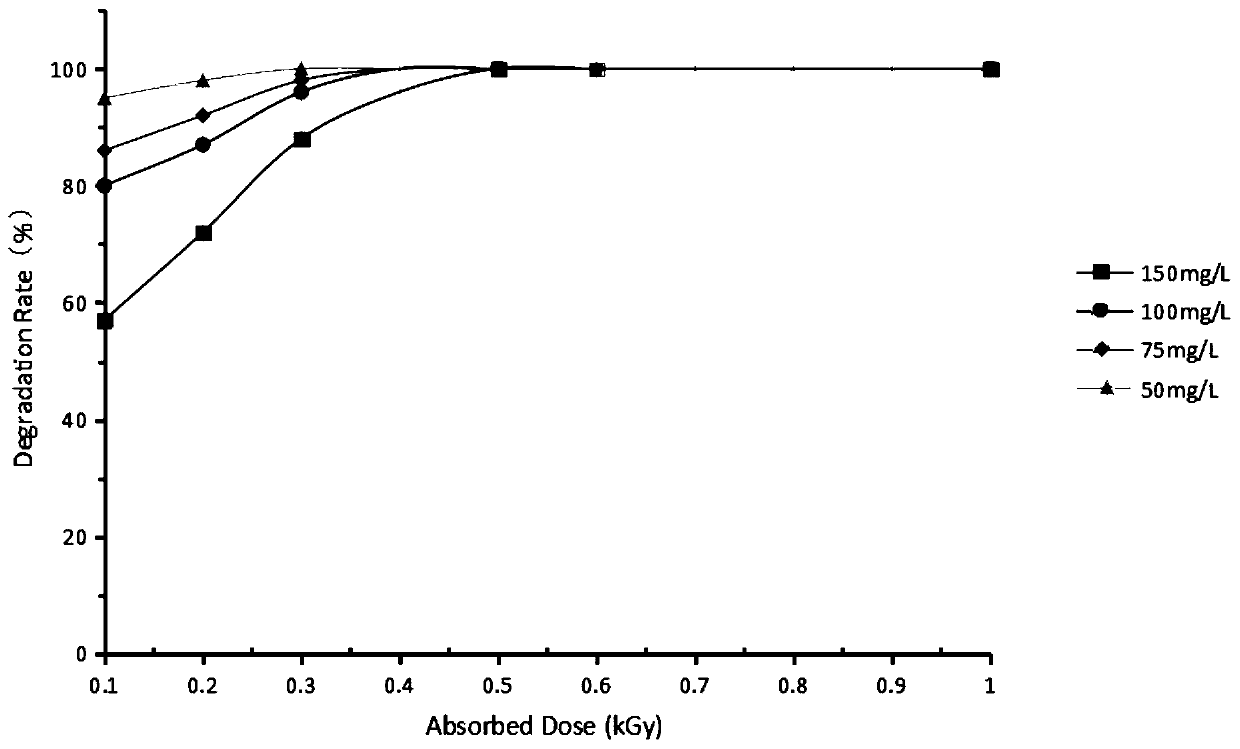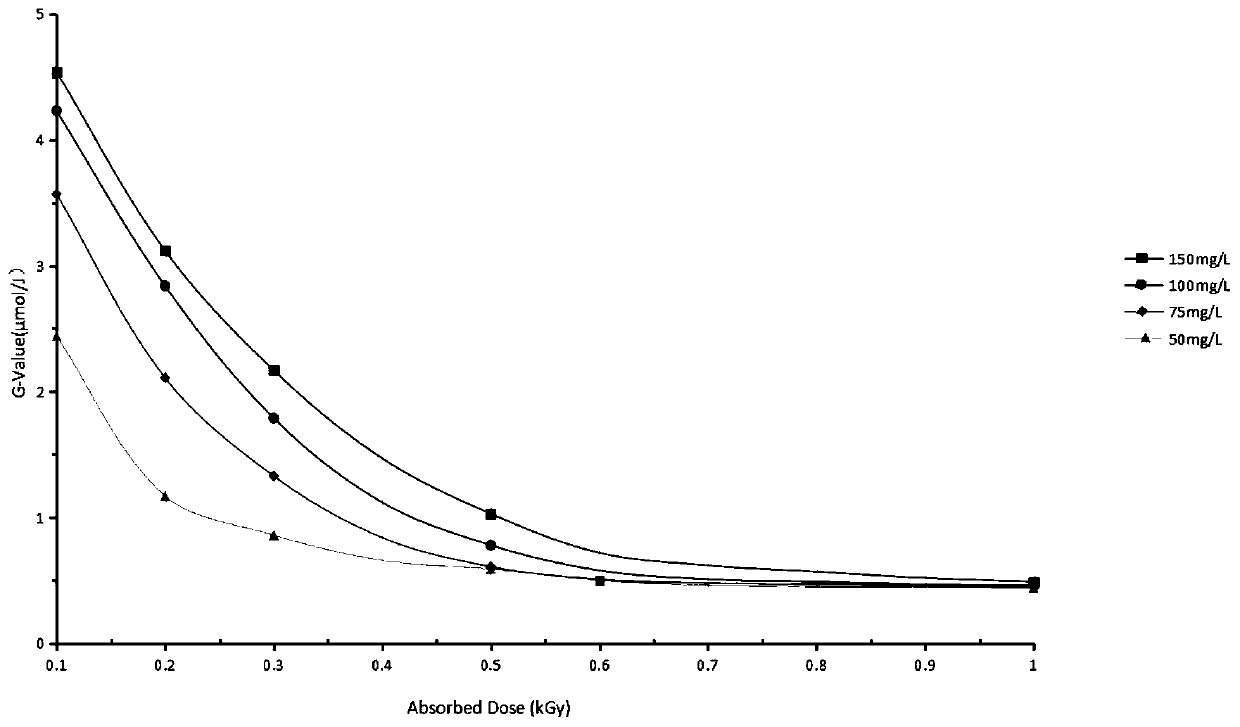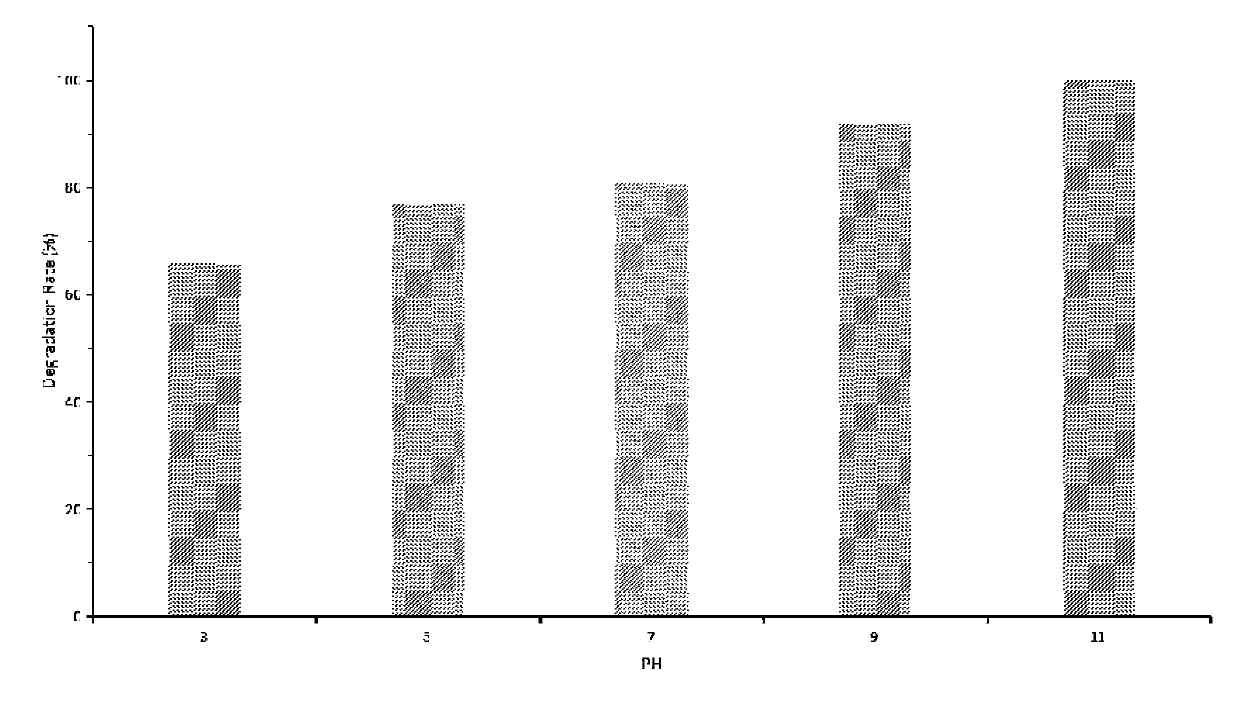Degradation method for sulfadimidine in water
A technology of sulfamethazine and water body, which is applied in the field of degradation of antibiotic organic pollutants in water body, can solve the problems of difficult load degradation treatment, unsatisfactory treatment effect, complicated process, etc., and achieve improved recyclability, low cost, and high preparation process simple effect
- Summary
- Abstract
- Description
- Claims
- Application Information
AI Technical Summary
Problems solved by technology
Method used
Image
Examples
Embodiment 1
[0031] In this embodiment, a method for degrading sulfamethazine in a water body uses a biochar adsorption material and strengthens the degradation of the sulfamethazine sulfamethazine in the water body through auxiliary electron beam irradiation, including the following steps:
[0032] a. Preparation of synthetic biochar adsorption material:
[0033] a-1. Preparation of biochar carrier:
[0034] Using rice stalk, rice husk and corn dregs as the initial raw materials, according to the mixing mass ratio of rice stalk, rice husk and corn dregs of 1:1:1, mix the rice stalk, rice husk and corn dregs, wash 4 times with water , after removing the adherents on the surface of the raw material mixture, air-dry for 2 days, and dry overnight in an oven at 80°C, after crushing, pass through a sieve with a pore size of 0.154mm to obtain a biomass powder material;
[0035] Then weigh 20g of the biomass powder material that has passed through the sieve, put it into the crucible, cover it ag...
Embodiment 2
[0050] This embodiment is basically the same as Embodiment 1, especially in that:
[0051] In this embodiment, a method for degrading sulfamethazine in a water body uses a biochar adsorption material and strengthens the degradation of the sulfamethazine sulfamethazine in the water body through auxiliary electron beam irradiation, including the following steps:
[0052] a. Preparation of synthetic biochar adsorption material:
[0053] a-1. Preparation of biochar carrier:
[0054] Using rice straw, chaff and corn dregs as initial raw materials, according to the mixing mass ratio of rice straw, chaff and corn dregs of 1:2:1, mix rice straw, chaff and corn dregs, wash 4 times with water , after removing the adherents on the surface of the raw material mixture, air-dry for 2 days, and dry overnight in an oven at 80°C, after crushing, pass through a sieve with a pore size of 0.154mm to obtain a biomass powder material;
[0055] Then weigh 20g of the biomass powder material that ha...
Embodiment 3
[0067] This embodiment is basically the same as the previous embodiment, and the special features are:
[0068] In this embodiment, a method for degrading sulfamethazine in a water body uses a biochar adsorption material and strengthens the degradation of the sulfamethazine sulfamethazine in the water body through auxiliary electron beam irradiation, including the following steps:
[0069] a. Preparation of synthetic biochar adsorption material:
[0070] a-1. Preparation of biochar carrier:
[0071] Using rice stalk, rice husk and corn dregs as the initial raw materials, according to the mixing mass ratio of rice stalk, rice husk and corn dregs of 2:1:1, mix the rice stalk, rice husk and corn dregs well, and wash 4 times with water , after removing the adherents on the surface of the raw material mixture, air-dry for 2 days, and dry overnight in an oven at 80°C, after crushing, pass through a sieve with a pore size of 0.154mm to obtain a biomass powder material;
[0072] The...
PUM
 Login to View More
Login to View More Abstract
Description
Claims
Application Information
 Login to View More
Login to View More - R&D
- Intellectual Property
- Life Sciences
- Materials
- Tech Scout
- Unparalleled Data Quality
- Higher Quality Content
- 60% Fewer Hallucinations
Browse by: Latest US Patents, China's latest patents, Technical Efficacy Thesaurus, Application Domain, Technology Topic, Popular Technical Reports.
© 2025 PatSnap. All rights reserved.Legal|Privacy policy|Modern Slavery Act Transparency Statement|Sitemap|About US| Contact US: help@patsnap.com



